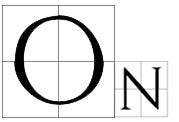Member-only story
Colonial Australia’s Strange Convict Society
How felons built a successful community
 On a sultry summer day in January 1788, beside the languid waters of Sydney Harbour, Great Britain began a truly strange, unprecedented experiment. It would build a colony using convicted criminals as colonists. Under the plan, Britain would turn Australia into a profitable and strategically-important colony, and the felons who would otherwise be hanged under harsh Georgian penal laws would be given a second chance at life.
On a sultry summer day in January 1788, beside the languid waters of Sydney Harbour, Great Britain began a truly strange, unprecedented experiment. It would build a colony using convicted criminals as colonists. Under the plan, Britain would turn Australia into a profitable and strategically-important colony, and the felons who would otherwise be hanged under harsh Georgian penal laws would be given a second chance at life.
James Mario Matra, one of the champions of the scheme, described it as “a most desirable and beautiful union […] economy to the public, and humanity to the individual”. Everyone would win, that is, except for the Aborigines whose lands had been seized for the experiment.
Britain transported 160,000 convicts to its Australian colonies of New South Wales, Western Australia, and Tasmania (then called Van Diemen’s Land) between 1788 and 1868, building a felon-majority society. Throughout the 1820s, convicts outnumbered free settlers to New South Wales three to one. In 1823, convicts made up 58% of the non-Aboriginal population of Tasmania. As late as 1837, 32,000 of New South Wales’ 97,000 non-Aboriginal residents were convicts under sentence, and many of the rest were emancipists (convicts who had been pardoned or whose sentences had…